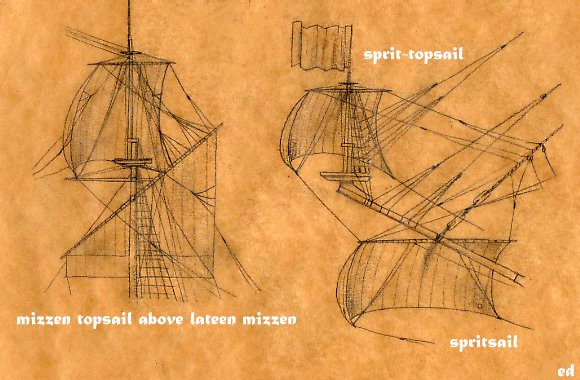-
Posts
13,352 -
Joined
-
Last visited
Content Type
Profiles
Forums
Gallery
Events
Everything posted by druxey
-

Detail sander from an electric toothbrush
druxey replied to grsjax's topic in Modeling tools and Workshop Equipment
I have used an old electric toothbrush with fine polishing powder (pumice) to buff up carvings. -

I have adopted another orphaned kit
druxey replied to mtdoramike's topic in RC Kits & Scratch building
Vastly improved! -

Lapwing 1816 Revenue Cutter
druxey replied to iMustBeCrazy's topic in CAD and 3D Modelling/Drafting Plans with Software
There were several Lapwings, according to David Lyon's The Sailing Navy List. This is an authoritative book. 1) 1764-5 2) 1785-1828 3) 1808-44? 4) 1825-1864 The 1808 ship was, according to Lyon, a coastguard ship built, as you say, in Megavissey, Cornwall. He notes that she was still in service in 1816 (page 333). Possibly built to the same draughts as Fancy of 1817, whose lines and deck plans are extant. (page 334). Perhaps your Lapwing of the 1830's was number 4, above? This vessel was built in Chatham Dockyard. Keel laid July 1823, launched February 20, 1825. She was a packet ship in 1829 and hulked in 1845. This ship was one of the numerous 10-gun brig/brig sloop Cherokee/Cadmus/Rolla class, armed with 2 6=pounder long guns and 8 18-pounder carronades. The packets carried only 3 guns. Nominal crew was 75 men. I hope that the above is of some help. -
You might consider 5 minute epoxy for wood-metal joints.
- 17 replies
-
- norwegian sailing pram
- Finished
-
(and 1 more)
Tagged with:
-

HMCSS Victoria 1855 by BANYAN - 1:72
druxey replied to BANYAN's topic in - Build logs for subjects built 1851 - 1900
And add an electrical heating wire for winter!- 1,013 replies
-
- gun dispatch vessel
- victoria
-
(and 2 more)
Tagged with:
-

HMCSS Victoria 1855 by BANYAN - 1:72
druxey replied to BANYAN's topic in - Build logs for subjects built 1851 - 1900
Wrigols are the answer!- 1,013 replies
-
- gun dispatch vessel
- victoria
-
(and 2 more)
Tagged with:
-
Well, good for you! I hope that the rebuild will be both enjoyable and accident-free. You have a first-class Admiral!
- 79 replies
-
- SD 14
- Marcle Models
-
(and 1 more)
Tagged with:
-
So sorry to read of your accident. I'm glad that you are OK. It's a shame about the model, though. We were enjoying seeing this 'real' build in miniature.
- 79 replies
-
- SD 14
- Marcle Models
-
(and 1 more)
Tagged with:
-
That is brilliant, Mark! Thank you for sharing this.
-
Sprit topsails seem to extend down to the bowsprit top or end, more or less, when set. Although this image is both Spanish and modern, English practice must have been similar. Harland, Seamanship in the Age of Sail, shows a sketch where the sail extends to the spritsail yard c.1700. In that case, the spritsail yard is set much closer to the end of the bowsprit.Take your pick!
-

HMCSS Victoria 1855 by BANYAN - 1:72
druxey replied to BANYAN's topic in - Build logs for subjects built 1851 - 1900
Hope all will be well from here on in, Pat.- 1,013 replies
-
- gun dispatch vessel
- victoria
-
(and 2 more)
Tagged with:
-
In ship models, any variation generally has a domino effect! It sounds as if you are able to compensate OK, though. That stern is a very tricky area. Looking good so far.
- 146 replies
-
- Harriet Lane
- Model Shipways
-
(and 1 more)
Tagged with:
-
The Van de Velde drawings have been shown to be extremely accurate, so I think you could use those as a reliable guide. The figures on the stern balconies will also assist in determining their size.
-
The pocketed battens are a nice 'extra' touch!
- 51 replies
-
- Model Shipways
- norwegian sailing pram
-
(and 1 more)
Tagged with:
About us
Modelshipworld - Advancing Ship Modeling through Research
SSL Secured
Your security is important for us so this Website is SSL-Secured
NRG Mailing Address
Nautical Research Guild
237 South Lincoln Street
Westmont IL, 60559-1917
Model Ship World ® and the MSW logo are Registered Trademarks, and belong to the Nautical Research Guild (United States Patent and Trademark Office: No. 6,929,264 & No. 6,929,274, registered Dec. 20, 2022)
Helpful Links
About the NRG
If you enjoy building ship models that are historically accurate as well as beautiful, then The Nautical Research Guild (NRG) is just right for you.
The Guild is a non-profit educational organization whose mission is to “Advance Ship Modeling Through Research”. We provide support to our members in their efforts to raise the quality of their model ships.
The Nautical Research Guild has published our world-renowned quarterly magazine, The Nautical Research Journal, since 1955. The pages of the Journal are full of articles by accomplished ship modelers who show you how they create those exquisite details on their models, and by maritime historians who show you the correct details to build. The Journal is available in both print and digital editions. Go to the NRG web site (www.thenrg.org) to download a complimentary digital copy of the Journal. The NRG also publishes plan sets, books and compilations of back issues of the Journal and the former Ships in Scale and Model Ship Builder magazines.





